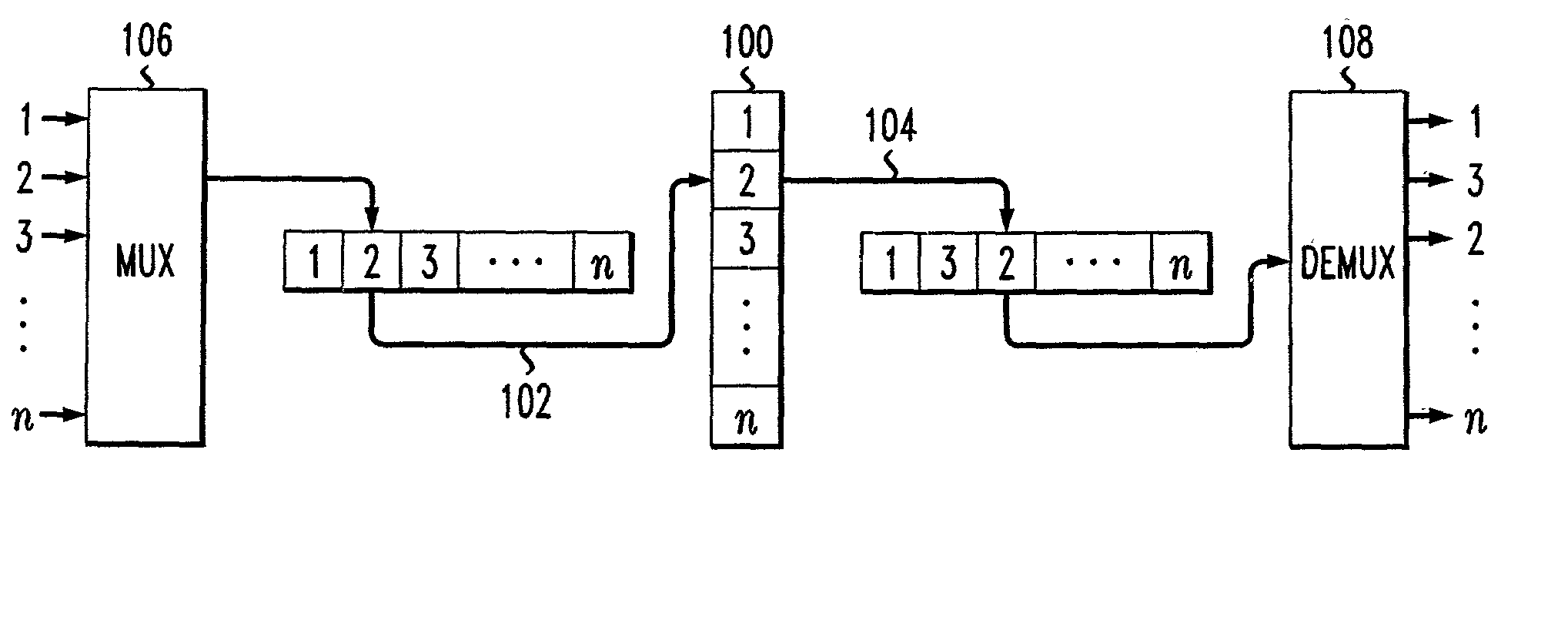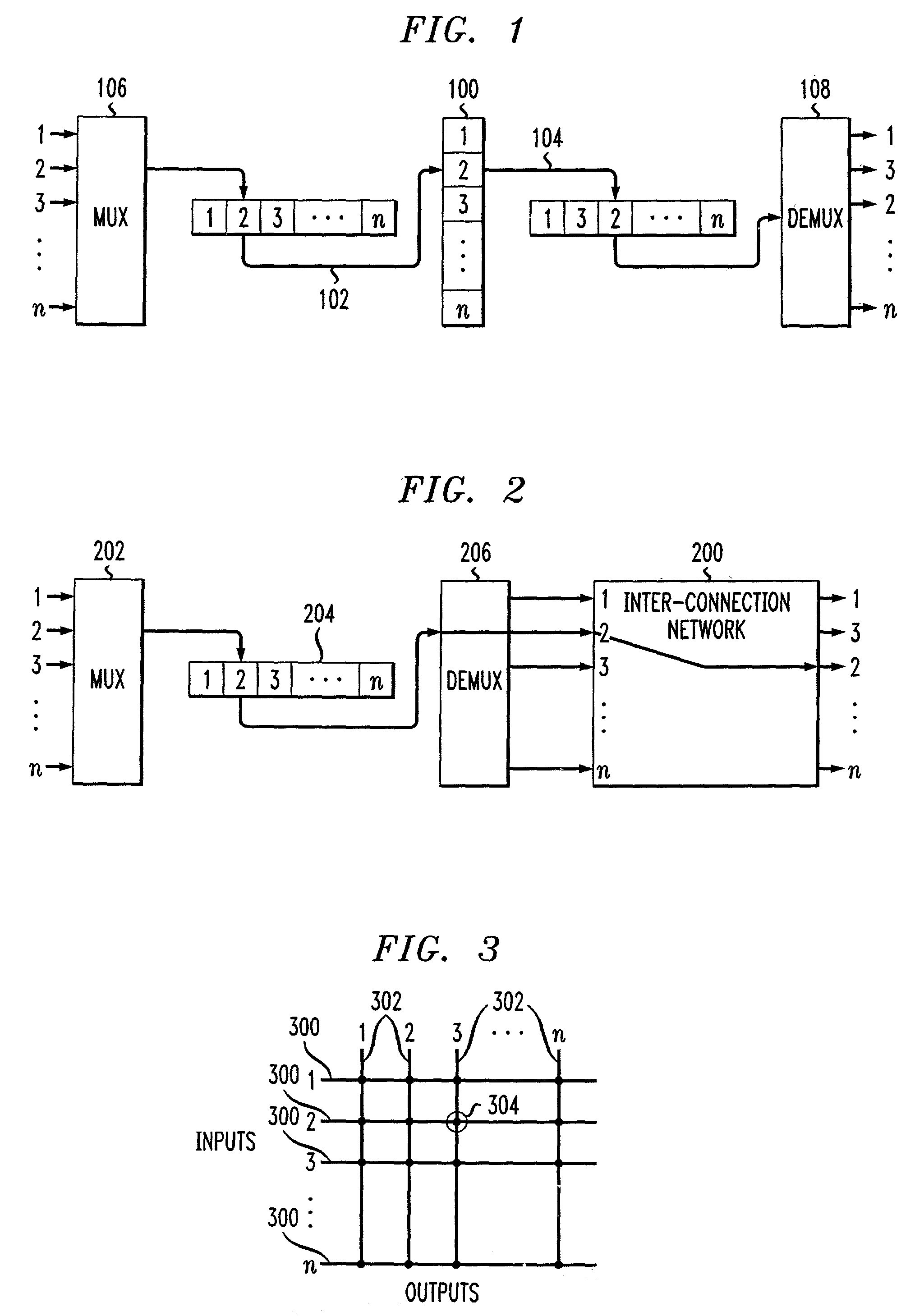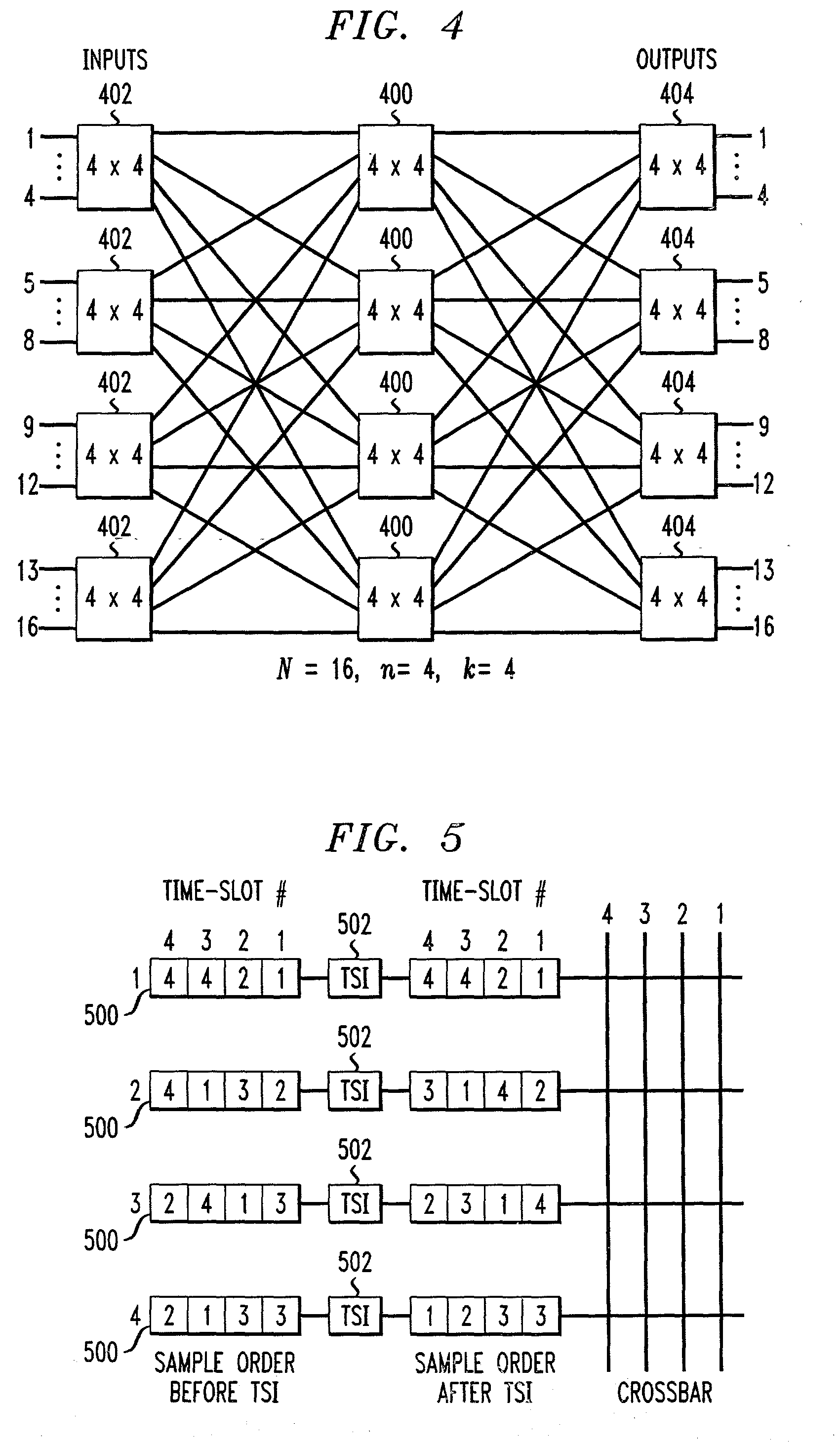Mesh architecture for synchronous cross-connects
a synchronous cross-connect and mesh technology, applied in the field of communication networks, can solve the problems of incorporating undesirable characteristics of data routing through a network, and achieve the effects of easy scalable, easy fabrication, and high degree of automation
- Summary
- Abstract
- Description
- Claims
- Application Information
AI Technical Summary
Benefits of technology
Problems solved by technology
Method used
Image
Examples
Embodiment Construction
[0031]FIG. 1 illustrates a time-division switching or multiplexing scheme which includes a time-slot interchanger (TSI) 100. The TSI 100 is typically implemented as a buffer having a single input line 102 and a single output line 104, but these lines carry samples from n distinct channels that are multiplexed by a multiplexor (MUX) 106. The different order of samples on the output line 104, when passed through a demultiplexer (DEMUX) 108, results in the n samples being placed on corresponding output lines of the DEMUX 108. In essence, the TSI 100 switches samples by rearranging the order of the samples on a multiplexed line.
[0032]The process of reordering the samples is repeated every n clock cycles and is referred to as the period of the TSI. In practice, the TSI 100 is often comprised of two buffers, one buffer being used for reading data and another buffer being used for writing data during a given TSI period. At the completion of a TSI period, the TSI buffers switch function (i....
PUM
 Login to View More
Login to View More Abstract
Description
Claims
Application Information
 Login to View More
Login to View More - R&D
- Intellectual Property
- Life Sciences
- Materials
- Tech Scout
- Unparalleled Data Quality
- Higher Quality Content
- 60% Fewer Hallucinations
Browse by: Latest US Patents, China's latest patents, Technical Efficacy Thesaurus, Application Domain, Technology Topic, Popular Technical Reports.
© 2025 PatSnap. All rights reserved.Legal|Privacy policy|Modern Slavery Act Transparency Statement|Sitemap|About US| Contact US: help@patsnap.com



